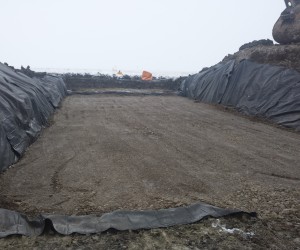The plastic limit is defined as the moisture content at which a soil becomes plastic. It is the boundary between a soil’s solid and plastic states.
ASTM D4318 is the standard test procedure for determining the plastic limit. Of course, a soil doesn’t go from solid to plastic all at once, but the standard test procedure ensures that everyone’s talking about the same thing.
On one of our recent projects, the plastic limit was 21.9% for clay, 28.4% for silt, and 16.0% for the bedrock, which was weak claystone.
In the field, there is a simple way to test for soil plasticity. Take a handful of the soil, roll it in the shape of a cylinder between both hands, getting smaller until it breaks. If it breaks greater than about a quarter inch diamter, it’s plastic. If it breaks less than quarter inch diameter, it’s solid.
The ASTM test procedure is similar to this but uses a diameter of 1/8″. But based on various field conditions, you should err on the high side. If you’re close, then don’t rely on the results anyway, it’s just an approximate test.
The plastic limit is an Atterberg limit. The others are liquid limit and shrinkage limit.
The plastic limit is used to determine the Plasticity Index. The plasticity index is the numerical difference between the liquid limit and plastic limit (PI = LL – PL) and it is a measure of the plasticity of a soil.

Speak Your Mind